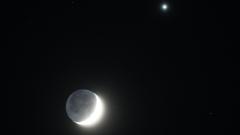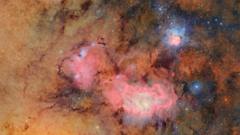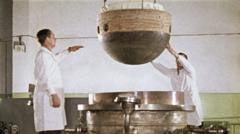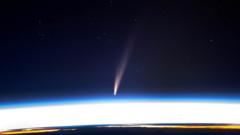The sky turned enchanting on Friday as Venus, renowned as the Evening Star or Morning Star, displayed its brilliance above a shimmering crescent Moon. Captivated stargazers from the UK to the US, Turkey, and China enjoyed this dazzling spectacle, which was easily visible to the naked eye.
In Whitley Bay, a prominent crescent Moon shone brightly together with Venus, creating an astronomical highlight for observers. Meanwhile, in the Turkish capital of Ankara, the two celestial bodies graced the night sky alongside the iconic Kocatepe Mosque.
Looking ahead, January 2025 promises further astronomical marvels, with the chance to see Venus alongside Saturn on January 18, positioned just 2.2° apart in the sky.
Additionally, stargazers may indulge in the ongoing Quadrantid meteor shower, peaking this weekend. This annual event, which commenced on December 26 and will continue until January 12, gives enthusiasts additional opportunities to witness shooting stars amidst the brilliance of a crescent Moon and Venus.
Dr. Robert Massey, deputy director of the Royal Astronomical Society in the UK, encourages observers to find dark spots away from light pollution for the best viewing experience after sunset. He notes that the celestial display is a perfect treat for the new year, inviting everyone to look up and enjoy the wonders of the night sky.
As Venus continues to enchant, the excitement for sighting these celestial wonders in the coming months only grows.
In Whitley Bay, a prominent crescent Moon shone brightly together with Venus, creating an astronomical highlight for observers. Meanwhile, in the Turkish capital of Ankara, the two celestial bodies graced the night sky alongside the iconic Kocatepe Mosque.
Looking ahead, January 2025 promises further astronomical marvels, with the chance to see Venus alongside Saturn on January 18, positioned just 2.2° apart in the sky.
Additionally, stargazers may indulge in the ongoing Quadrantid meteor shower, peaking this weekend. This annual event, which commenced on December 26 and will continue until January 12, gives enthusiasts additional opportunities to witness shooting stars amidst the brilliance of a crescent Moon and Venus.
Dr. Robert Massey, deputy director of the Royal Astronomical Society in the UK, encourages observers to find dark spots away from light pollution for the best viewing experience after sunset. He notes that the celestial display is a perfect treat for the new year, inviting everyone to look up and enjoy the wonders of the night sky.
As Venus continues to enchant, the excitement for sighting these celestial wonders in the coming months only grows.










